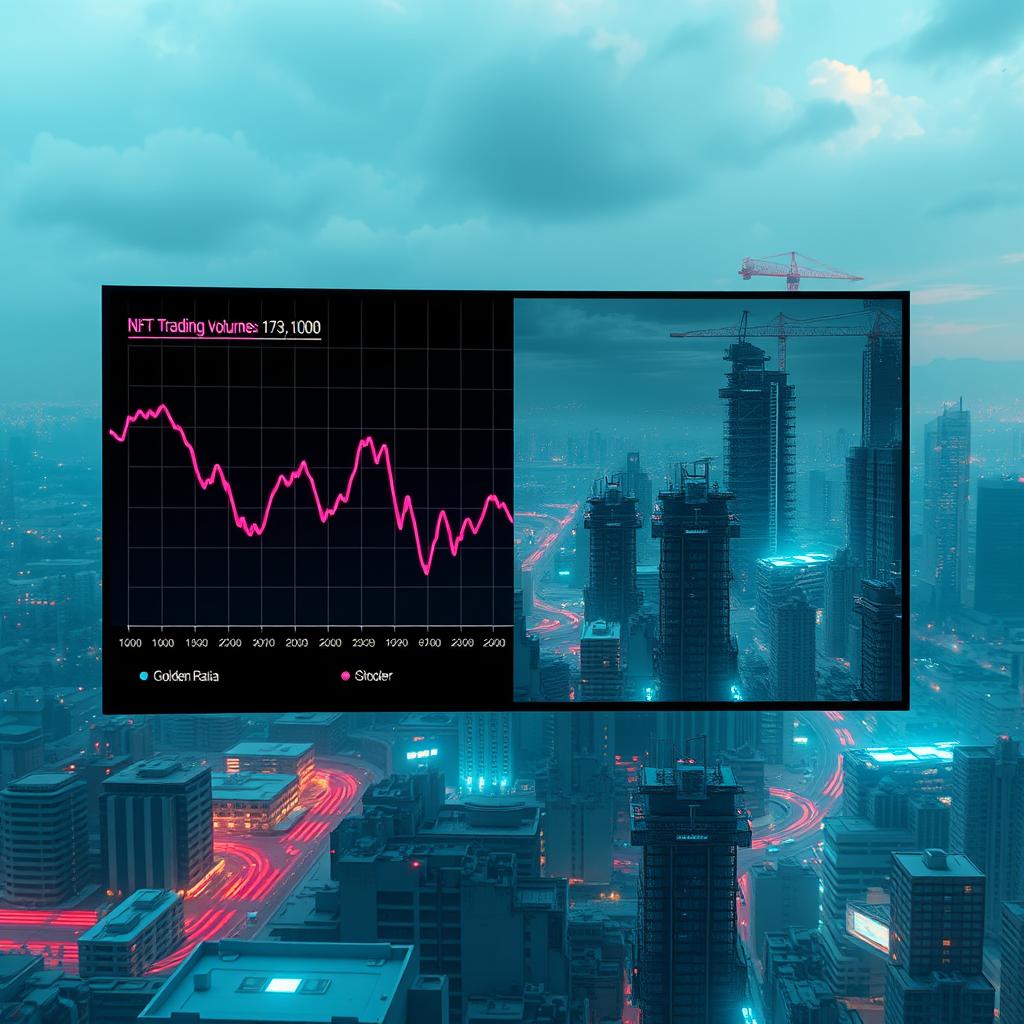Analysis of MakersPlace Market Exit
The recent announcement by MakersPlace to cease operations after six years of facilitating digital art transactions through its NFT marketplace signals a significant shift in the NFT landscape. This decision comes on the heels of a tumultuous period for the NFT market, marked by declining trading volumes and sales. According to a DappRadar report, NFT trading volumes plummeted from $5.3 billion in the first quarter of 2024 to $1.5 billion in the third quarter, before slightly recovering to $2.6 billion in the fourth quarter. This represents a 19% decrease in trading volumes and an 18% decrease in sales compared to 2023, underscoring the challenges the NFT market has faced in maintaining momentum.
Impact on the NFT Market
The closure of MakersPlace, a platform that has been operational since 2018, highlights the broader challenges in the NFT industry. Despite the initial hype and significant investments in 2021, the market has struggled with volatility and sustaining growth. The decline in NFT sales and trading volumes in 2024, as reported by DappRadar, indicates that the market is experiencing a correction phase. This phase is characterized by a decrease in investor interest and a reevaluation of the market’s potential for long-term growth.
MakersPlace’s Decision and Its Implications
MakersPlace’s decision to shut down its operations is likely due to the difficulties in securing additional funding, a common challenge faced by many NFT marketplaces. The platform’s efforts to assist artists and collectors in transferring their assets, ensuring employee severance payouts, and returning unused funds to investors demonstrate a commitment to a smooth transition. However, this exit may also lead to a loss of trust among artists and collectors, potentially exacerbating the decline in NFT market activity.
Technological and Market Trends
The NFT market’s volatility and challenges in sustaining growth can be attributed to various factors, including the lack of clear regulations, market speculation, and the absence of widely accepted standards for NFTs. Despite these challenges, the technology underlying NFTs, blockchain, continues to evolve and improve, offering potential solutions for some of the market’s issues. For instance, advancements in blockchain scalability and interoperability could enhance the user experience and increase the adoption of NFTs.
Predictions for the NFT Market
Given the current trends and challenges in the NFT market, several predictions can be made:
- Consolidation and Innovation: The exit of MakersPlace and potentially other NFT marketplaces may lead to a period of consolidation in the industry. This could result in the emergence of stronger, more innovative platforms that better meet the needs of artists, collectors, and investors.
- Regulatory Clarity: As the NFT market continues to evolve, there will be an increasing need for regulatory clarity. Governments and regulatory bodies may establish clearer guidelines for the creation, sale, and trade of NFTs, which could help stabilize the market and attract more mainstream investors.
- Diversification of NFT Use Cases: Beyond digital art, NFTs have the potential to be used in a wide range of applications, including gaming, music, and virtual real estate. As the market matures, we may see a diversification of NFT use cases, leading to increased adoption and a more stable market.
- Improved Blockchain Technology: Advancements in blockchain technology, such as improved scalability, security, and usability, will be crucial for the long-term success of the NFT market. As blockchain technology continues to evolve, we can expect to see more efficient, user-friendly, and secure NFT marketplaces and platforms.
In conclusion, the market exit of MakersPlace is a significant event in the NFT market, reflecting the challenges and volatility that the industry has faced in recent years. However, despite these challenges, the potential for NFTs and the underlying blockchain technology remains substantial. As the market continues to evolve, we can expect to see innovation, consolidation, and potentially, the emergence of new use cases and applications for NFTs.




